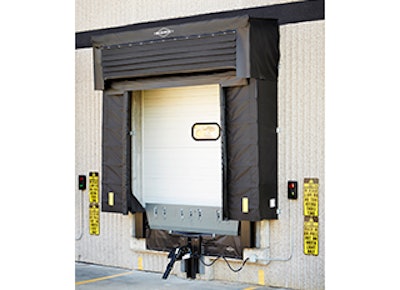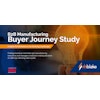
When you break down the food supply chain process, it’s easy to see that a large portion of America’s food is delivered and shipped through loading docks. Loading docks play a significant role in bringing fresh, safe food to American consumers. This critical link in America’s food supply chain is increasingly being regulated by authorities such as the Food and Drug Administration and new laws like the Food Safety Modernization Act. To stay ahead of regulations, safety-minded businesses are proactively addressing a host of potential threats at the loading dock that include:
- Cold Chain Integrity –When fresh or frozen foods are being transported, the procedures and equipment needed to maintain the integrity of the cold chain are critical. Any breakdown in the cold chain can adversely affect the quality and freshness of food and, in some cases, lead to serious food contamination. A common breakdown in the cold chain occurs when the security seal is broken on trailer doors outside the building and the doors are opened in the drive approach, exposing product to outside elements and security issues.
- Contamination – An unsecured or poorly designed loading dock position creates a gaping hole in a building. These holes create entry points for dust, snow and unwanted pests.
- Cargo Theft –Inbound Logistics magazine reports an estimated $30 billion in cargo is stolen each year in the U.S. The most highly sought after shipments are pharmaceuticals, consumer electronics, apparel and food.
- Terrorist Threats – Loading docks with unsecured trailers are tempting targets for terrorist threats. A common practice that puts companies at risk is when the security seal on a trailer is broken or put in place by non-company personnel on the drive approach. This allows food to be easily stolen or poisoned.
It’s important for everyone involved in the food supply chain to address these common issues found at the loading dock. To do so, companies need to conduct a thorough examination of their loading dock environment — inside and out. It starts by answering some of these important questions:
- What types of trailers are being received at your loading dock?
- Are the trailers being properly secured to the loading dock?
- Where are the security seals being cut and placed?
- Do you see gaps of daylight around your seals, shelters and loading dock doors?
- Are products being damaged or contaminated during the loading and unloading process?
- Are you maintaining proper environmental conditions by sealing all four sides of the trailer at loading dock openings?
- Are your loading dock pits being properly washed down and sanitized?
In addition to addressing these serious questions, it’s important for businesses to bring in a loading dock consultant who can analyze specific applications and provide proper solutions. A loading dock professional typically will recommend a system of products that work together to enhance the overall security, safety and functionality of a loading dock.
Automatic Vehicle Restraint
An automatic vehicle restraint can help prevent theft, reduce contamination and improve the safety of dock workers. An automatic restraint — like the Dok-Lok® from Rite-Hite — wraps around a trailer’s rear-impact guard (RIG), securing the trailer to the loading dock. This helps to reduce trailer separation accidents and serves as a theft deterrent. In addition to improving safety and reducing damage to equipment, a tight connection reduces white space where dirt, debris, insects and other environmental contaminants can enter a building.
Vertical Dock Leveler
Once a trailer is secured at the loading dock, the next step is bridging the gap between the loading dock floor and the trailer bed. A vertical-storing dock leveler is considered the standard for maintaining cold chain integrity, environmental control and security. Look for a “drive through” application that allows dock workers to open trailer doors inside the facility. This helps to ensure cold chain integrity while reducing the chance of theft or tampering.
Seals and Shelters
A dock seal or shelter creates an environmental barrier between the back end of the semi-trailer and the inside of the loading dock. This connection helps companies control their environment by keeping wind, rain, dust, bugsand other contaminants outside the building, while preventing the escape of valuable energy from inside the building.
Conclusion
In most instances, a systematic approach that incorporates automatic vehicle restraints, vertical dock levelers, appropriate seals/shelters and the proper sequence of operation is the best way to secure a loading dock. These products — working together as a system — enhance security, protect employees, reduce contamination and improve environmental conditions within a building and throughout a given supply chain.
To create a safer, more secure loading dock environment, companies are encouraged to visit RiteHite.com, or call 888-841-4283 to schedule an assessment with a loading dock professional. A Rite-Hite representative will conduct an on-site visit to analyze all aspects of a loading dock environment, including:
- Drive approach
- Loading dock dimensions
- Loading dock door configuration
- Building construction (Brick, metal, etc.)
- Weather conditions (Extreme heat, snow, etc.)
- Types of trailers (Semi-trailer with rear-impact guard, intermodal containers, etc.)
- Weight and type of materials being loaded/unloaded
- Security and safety risks
- Environmental conditions inside the facility
For more food industry news and information, subscribe here and follow us on Twitter, Facebook or LinkedIn.























